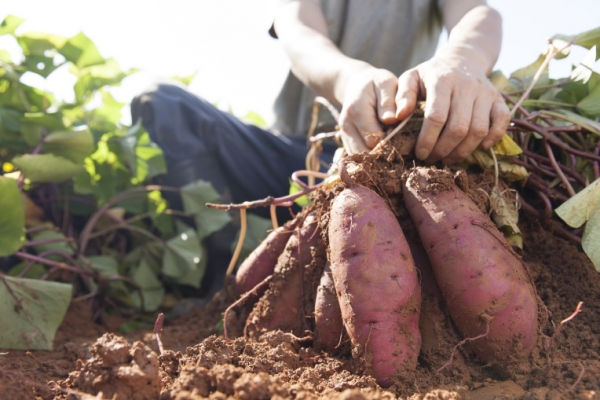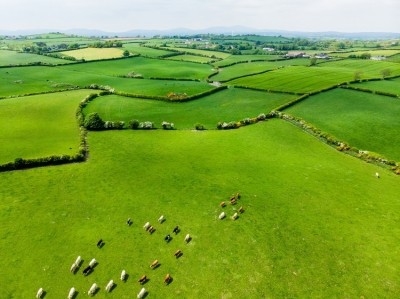EC developing certification to boost ‘carbon farming’ but how should it be defined?

The European Commission has committed to reach net zero emissions by 2050. To get there, it is focusing on three priorities, the ‘most urgent’ of which is reducing emissions from fossil fuels. European regulators acknowledge that some areas of the economy will still require carbon as an input and by 2050 they want to have moved away from a reliance on fossil fuels with carbon recycled from waste streams, sustainable sources of biomass or captured directly from the atmosphere.
But even if businesses in the bloc are able to sever their dependence on fossil fuels, to achieve its carbon neutral target the region will also need to increase its ability to remove carbon from the atmosphere.
By 2050, each tonne of CO2e emitted into the atmosphere will have to be offset by a tonne of CO2 removed from the atmosphere, the EC said. To hit this objective is a significant challenge. The amount of carbon annually removed from the atmosphere by ecosystems in Europe is declining and industrial carbon removal solutions are virtually non-existent today.
These efforts have to be intensified if Europe is to reach net zero, Executive Vice-President Frans Timmermans stressed.
“To reach climate neutrality in 2050, we need emissions cuts as well as sustainable solutions for removing and recycling carbon. Part of the answer is in innovation and in technologies we are developing for the future. And part of it is in the nature-based solutions which are already available.”
Sequestering carbon through agriculture
While the Commission called out agriculture for its ‘unavoidable’ carbon footprint, policy makers also highlighted the sector’s potential to act as a carbon sink through better land management practices.
Timmermans insisted that this is a positive business opportunity for European farmers, with financial benefits tied to carbon farming practices. Positives include higher yields and greater resilience. Significantly, the EC said land managers will be supported through EU public funding, primarily via the Common Agricultural Policy, as well as private investment.
“Carbon removals create new business opportunities. In the first place for farmers, for foresters, and other land managers. They can benefit from a new source of income in exchange for rolling out carbon farming practices and for storing carbon in soil, trees, shrubs, wetlands, and in peatlands. These practices are also great for nature and for the sustainability of our food supply,” the European policy maker contended.
2022 certification scheme planned
In order to support and promote the uptake of carbon farming, the Commission revealed it will launch a framework for the certification of carbon renewals in 2022.
The certification rules will set 'scientifically robust' requirements for transparent measurement, monitoring, reporting and verification of the carbon removed from the atmosphere, ensuring a ‘high level of environmental integrity’ and biodiversity protection, the Commission revealed.
Timmermans said this level of transparency was a necessity for the sector to build trust. “Carbon removals need to be credible to have the desired effect. We will therefore develop a European certification scheme next year to make sure that carbon removals are truly that. So that it is good for climate, good for nature and good for the income of farmers and foresters. So it's three wins.”
The Commission has launched a call for evidence to strengthen its understanding of the key issues for carbon removals and is establishing an expert group to exchange best practices on carbon farming. Cracks in how stakeholders approach the question are already evident.
What is ‘carbon farming’?
‘Carbon farming’, as the EC is terming it, is akin to regenerative agriculture, a series of practices that some in the food and ag sector have been working to promote for some time. Essentially, the ambition is to take atmospheric carbon and sequester it in the earth, building soil health in the process.
There is no agreed definition of regenerative agriculture but common aspects include no- or low-till farming, the use of cover crops, a reduction in chemical pesticide and fertiliser use, and the introduction of crop rotations or mixed farming.
According to the EC’s new fact sheet, it appears that some of these practices will inform Europe’s approach.
Alongside reforestation and restoration of peatlands and wetlands, the document highlights the potential of agroforestry and other forms of mixed farming, the conversion of cropland to fallow, and the use of conversion tillage, catch crops and cover crops, such as legumes, rapeseed, rye and vetch.
The issue of leaving land fallow is an interesting one that could potentially mark something of a departure from how European agricultural subsidies are calculated today. The current system of CAP payments focuses on land under cultivation, thereby discouraging practices that would see grasslands left uncultivated.
What the document doesn’t touch on is the controversial issue of chemical inputs – which often sees significant pushback from farmers. However, Europe has set a target for 25% of land under cultivation to be organic by 2030.

How should carbon certification be measured?
Farming organisations Copa and Cogeca welcomed the inclusion of carbon farming in the political agenda and praised the EU’s vision of a ‘new green business model’ that rewards carbon sequestration in living biomass, soils and organic matter.
“The agricultural sector has been undertaking efforts and deploying investments towards carbon farming practices which precede today’s Commission communication. These efforts must be recognised, and future investments should be promoted,” reflected Copa President Christiane Lambert.
The farming organisations were keen to focus on the admission from the EC that carbon farming is ‘very site dependent’, arguing against the adoption of a one-size fits all approach. And, if a practice-based approach isn’t the best way forward, Copa and Cogeca also claim that a results-based approach isn’t optimal either because of the ‘uncertainty’ farmers would be faced with.
But without a set of common rules and measurements, could this prove problematic for the EC’s certification proposals, opening these efforts up to the possibility of greenwashing?
Copa and Cogeca is instead backing what it describes as a ‘market-led approach’, allowing carbon credits to become an additional income for farmers. This would require clarity over how to establish a system of trading carbon credits. “The issues of timing of payments and where to market carbon credits should also be addressed and clarified,” the farming lobbyist argued. “Measures should be put in place to avoid trade-off from companies and/or the industrial sector, that could acquire these credits, instead of a combined package of efforts to reduce emissions and compensation through removals.”
But - without basing the definition of carbon farming on either the practices implemented on-farm or a measurement of the carbon these practices are able to sequester in the ground - it is unclear how a system that would see farmers sell credits to offset emissions in other polluting sectors could ensure the carbon removals are 'credible', as the EC insists they must be. Concerns among environmentalists are high that this would be tantamount to agri-business-as-usual. And when agricultural production accounts for around one-quarter of global GHG emissions, for Europe to reach true net zero, this is not an option.

‘It is necessary to measure outcomes’
Certainly, not all proponents of regenerative agriculture concur with Copa and Cogeca’s conclusions on how carbon farming certification – and financial support - should be implemented and assessed.
Last month, international pioneers in regenerative agriculture met at Schloss Kirchberg/Jagst in Germany for the first Climate Farming Congress. The event was co-organized by Akademie Schloss Kirchberg and Climate Farmers, with the support of GLS Bank, elobau Stiftung and Swabian Farmers’ Association. It resulted in a Regenerative Agriculture Manifesto signed by 80 participants from 16 European countries that outlined a common approach to climate smart agriculture.
“Farmers hold one of the biggest levers in the fight against climate change in their soil and their hands,” said Ivo Degn and Philippe Birker, founders of Climate Farmers. “We have to do is join forces and show the world how we can use our enormous potential to sequester CO2 and regenerate ecosystems on the way to a climate-positive future.”
Like Copa and Cogeca, the Climate Farming Congress recognizes that regeneration cannot be a list of practices but is fundamentally context-specific. “There is no single concept which can be replicated everywhere. While best-practices exist, through analysis of contexts result in unique (farming) system designs.”
However, unlike the market-based approach advocated by the European farming umbrella organisations, signatories of the Climate Farming Manifesto suggest that carbon farming assessment needs to be outcome-based. Outcomes should be ‘clear indicators’ which reflect the full potential of the given context. Progress, they argue, should be measurable, using qualitative and quantitative key performance indicators.
“It is necessary to measure outcomes for verifying the regenerative effects on the social, economic and environmental ecosystem. We are not dogmatic about farming practices and systemic approaches, but rather embrace the diversity of pathways towards regenerating in different contexts. No practice should be seen independently as harmful for ecosystems, before being assessed in relation to the specific context and the long term regenerative impact.
“A recognition that regenerative agriculture does not exist in absolutes is essential in this discussion. Regeneration is a spectrum that represents the evolution towards healthy and resilient ecologies. Given the fact that nature is inherently dynamic, the regeneration process can never be finished or stable, and instead is a continuous improvement.”


















